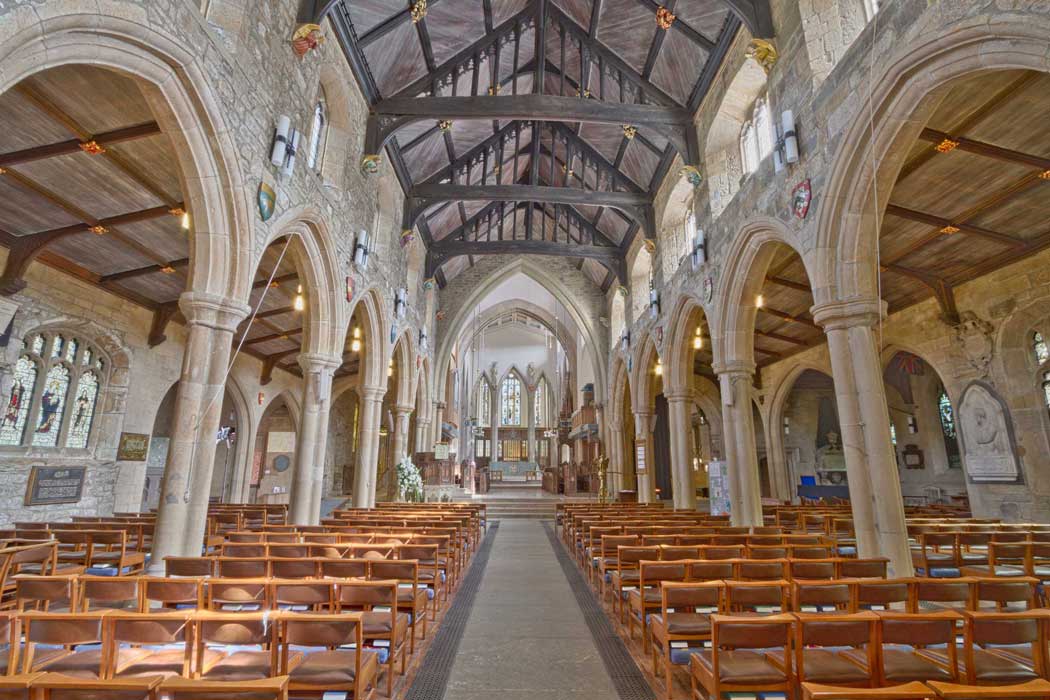Bradford Cathedral is one of the main landmarks in Bradford city centre. The church dates from the 15th century but was only upgraded to cathedral status in 1919.
The first church on the site was built in the 8th century, although that fell into ruin around the time of the Norman Conquest and 300 years later a second church built by the Normans was destroyed by the Scots. The church was rebuilt in the 15th century and it has operated as the parish church of St Peter until 1919 when it was promoted to cathedral status.
What to see at Bradford Cathedral
The cathedral is one of Bradford’s only remaining buildings from the late medieval period, although it has undergone a number of changes during the past 500 years.
The nave arcades, which date from 1458, comprise the oldest parts of the cathedral and the tower at the western end was added in 1508. More recently, the cathedral was extended and restored in the 1950s and 1960s by Edward Maufe.
Highlights of a visit to the cathedral include embroidery by Ernest Sichel and some of William Morris’ earliest stained-glass windows.
Bradford Cathedral includes memorials to the prominent Lister family, mathematician and astronomer Abraham Sharp, chemotherapy pioneer George Whyte-Watson, Robert Lowry and Joseph Priestley.

Visiting Bradford Cathedral
Bradford Cathedral is located near the spot where the city centre joins the Little Germany neighbourhood. It is just a one-minute walk from the modern Broadway shopping centre and it is a 10-minute walk from both Bradford Interchange and Forster Square railway stations.
Admission to the cathedral is free of charge.
The cathedral is over 500 years old and, as such, it was not designed with wheelchair accessibility in mind. Despite this, most areas of the cathedral are wheelchair accessible and the cathedral also has disabled toilet facilities.
Although it is a beautiful building, it doesn’t take a long time to visit and you can easily be in and out in around 15–20 minutes.


There are no comments yet.